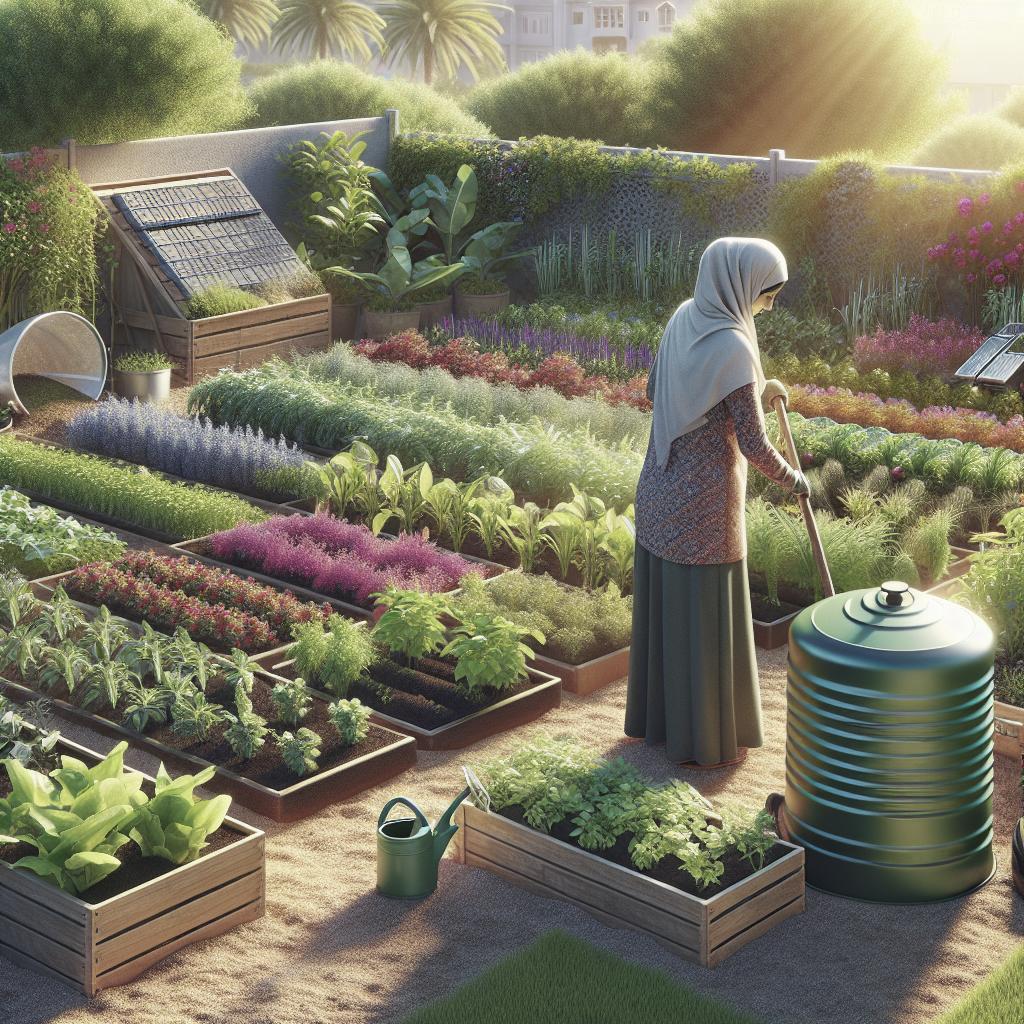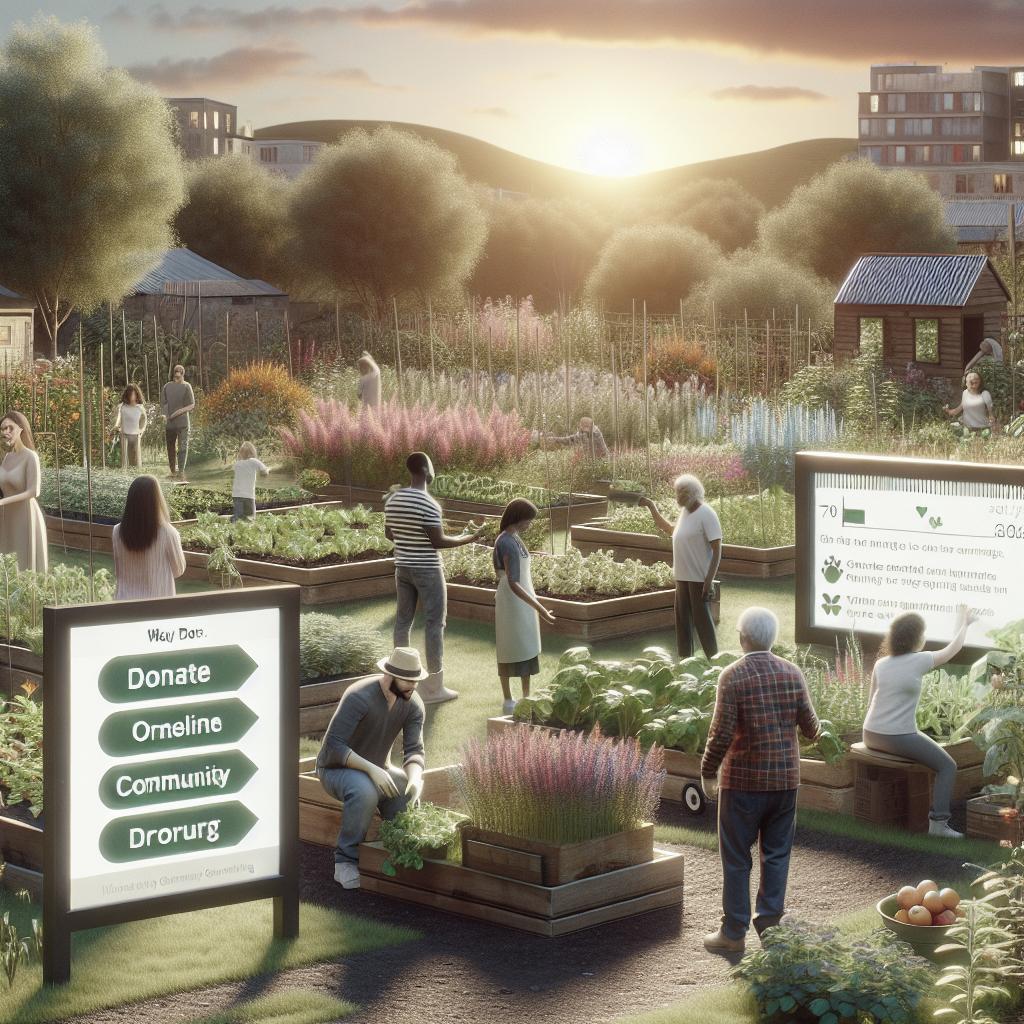Creating and maintaining a garden might seem like a daunting task, but effective resource management can transform it into an enjoyable and sustainable hobby. This blog post outlines strategies to manage garden resources effectively by leveraging nature itself. We will go through five critical steps to ensure your garden is low-maintenance yet thriving. From preparing your site carefully, choosing the right plants, understanding the benefits of planting more, to rethinking weeding practices and your overall mindset, this post aims to equip you with all the tools you need. Stick around for some free resources to help you get started!
Create a low maintenance garden by working with nature
Working with nature rather than against it is the key to a sustainable, low-maintenance garden. This involves making thoughtful decisions about your garden setup, selecting plants well-suited to your environment, and adopting practices that support natural growth processes. By syncing your efforts with the rhythms of nature, you can create a thriving garden that requires minimal intervention.
Rather than relying on chemical fertilizers or excessive watering, natural gardening methods emphasize soil health, biodiversity, and ecological balance. By fostering a more natural and supportive garden ecosystem, you can minimize the time, effort, and resources needed to maintain it.
Five steps to a low maintenance garden:
1) Prepare Your Site With Care
The first step towards a successful and low-maintenance garden is site preparation. Begin by understanding your garden’s soil type, pH levels, and drainage capacity. Conduct soil tests to determine its composition and nutrient levels, then amend the soil accordingly. Organic matter like compost can drastically improve soil health, drainage, and fertility.
Proper garden design and layout are also key. Consider factors like sunlight, wind patterns, and proximity to water sources while planning your garden. Utilize raised beds or no-dig gardening methods to enhance soil health and reduce erosion. Creating a well-thought-out plan will save you time and effort down the road.
2) Choose The Right Plants
Selecting the right plants for your garden is crucial for minimizing maintenance needs. Choose native or well-adapted species that thrive in your local climate and soil conditions. These plants are typically more resistant to pests and diseases, requiring less intervention. Additionally, opt for perennials over annuals to reduce the need for replanting every season.
Diversity is your ally. Incorporate a mix of plants that bloom at different times, have varying heights, and attract beneficial insects. This not only enhances the aesthetic appeal of your garden but also promotes a balanced ecosystem, reducing the need for artificial pest controls and fertilizers.
Not sure how to choose the right plants? Check out our FREE Guide
If you find yourself overwhelmed by the choices, don’t worry. Our comprehensive guide offers detailed information on selecting the best plants for your specific garden conditions. It includes tips on soil types, climate adaptability, and companion planting strategies to ensure a thriving, low-maintenance garden.
Download our FREE Guide to Plant Selection today and make an informed choice that saves you time and effort in the long run. The right plants are the foundation of an effective and sustainable garden. Click here to download!
3) More Plants, Fewer Problems
Contrary to intuition, having more plants can actually lead to fewer problems. Planting densely can reduce the likelihood of weeds taking hold, as they will have less space to grow. Moreover, a varied plant mix can attract beneficial insects that keep pests in check, reducing the need for chemical interventions.
Interplanting—placing different types of plants close together—can also enhance soil health. For example, legumes can fix nitrogen in the soil, benefiting neighboring plants. This natural symbiosis reduces the need for synthetic fertilizers and promotes a more self-sustaining garden environment.
4) Change The Way You Weed
Weeding can be one of the most labor-intensive aspects of gardening. However, rethinking how and when you weed can save significant time and effort. Regular, shallow weeding using a hoe or hand trowel can remove weeds before they establish deep root systems. Aim to weed early in the morning or after rain, when the soil is moist and roots can be easily pulled out.
Mulching is another fantastic tool for weed control. A thick layer of organic mulch not only suppresses weed growth but also retains soil moisture and improves soil structure as it decomposes. Apply mulch around plants and in garden beds to keep weeds at bay and enhance the overall health of your garden.
5) Change Your Mindset
Sometimes, the best way to manage a garden is to adjust your expectations and embrace a more relaxed approach. Gardens don’t need to be perfect or entirely weed-free to be beautiful and productive. Accepting a certain level of imperfection can make gardening more enjoyable and less stressful.
Furthermore, appreciating the small changes and gradual progress in your garden can be incredibly rewarding. Take time to observe how plants grow, how insects interact, and how the soil changes. This mindfulness can not only improve your gardening skills but also enhance your connection to nature.
More Free Resources For Your Garden…
Taking your garden to the next level doesn’t have to be daunting. We offer a range of free resources to help you manage your garden more effectively. From detailed guides on soil health and plant selection to tips on water conservation and organic pest control, our resources are designed to provide practical and easy-to-implement advice.
Explore our website for more free resources and start transforming your garden today. Whether you’re a beginner or a seasoned gardener, there’s always something new to learn and discover. Happy gardening!
| Step | Action | Benefit |
|---|---|---|
| 1) Prepare Your Site With Care | Test soil, amend with organic matter, plan layout | Improves soil health, enhances garden productivity |
| 2) Choose The Right Plants | Select native and perennial plants, mix diversity | Reduces pest issues, lowers maintenance |
| 3) More Plants, Fewer Problems | Plant densely, interplant for biodiversity | Suppresses weeds, enhances soil health |
| 4) Change The Way You Weed | Weed regularly, mulch for suppression | Saves time, improves soil moisture and structure |
| 5) Change Your Mindset | Embrace imperfection, practice mindfulness | Reduces stress, enhances gardening enjoyment |


